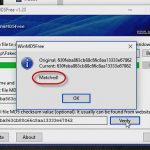To $_ or not to $_, that is the question! Windows 8 and PowerShell v3.
To $_ or not to $_, that is the question! Windows 8 and PowerShell v3.
(This post is based on the current Developers preview build of Windows 8 Server.)
So I’m sitting here contemplating something cool from Win 8 Server and PowerShell V3. I don’t know if you have had a chance to look at Windows 8 Server, perhaps the PowerShell v3 CTP, but you might have noticed this….
Old way:
PS>Get-WmiObject Win32_Service | where{$_.status -eq "Stopped"}
New way:
PS>Get-WmiObject Win32_service | where status -eq stopped
Notice that the Where-Object cmdlet does not require all the “code” looking stuff from version 2. There’s no {}, and no $_.
This is really cool, especially for an Admin. Have you tried to teach someone else what the $_ is and how to work with it? Sure, developers get it immediately, but Admins have a hard time understanding objects, properties and methods.
I know that the PowerShell Team spends a lot of cycles trying to abstract programming away from Administrators. In fact, I spent a couple of hours talking to Lee Holmes about this at the last PowerShell Deep Dive. The amount of passion the Team has to make it easy for Administrators to use PowerShell without learning to be programmers is amazing. This is a good example of that passion at work.
So, expanding off this wonderful idea, I tried this:
PS>Get-WmiObject Win32_Service | where status -eq Stopped -
and Startmode -eq Auto

Oops. Didn’t like that now, did she? (P.S. Read the error message. For fun, go look at the full help on Where-Object and you can glean how the Team is making this magic happen and why it’s not working.)
Let me say first that I understand this is a Preview release, not even beta, and the PowerShell Team is hard at work, and this could change.
As I consider the “new-way,” but see the limitation, I get into a funky mood and ask myself, “Is this really a good idea?” My friends refer to these moods as “disaster-bating,” and they generally leave the room when I start a discussion, but here it is:
Last week, I was teaching PowerShell V2 to Administrators and at the end of class I demo’d the Win 8 missing $_ trick. At first the response was pretty cool until we started to play with it. As soon as I did this…
PS>Get-WmiObject Win32_Service | where status -eq Stopped -
and Startmode -eq Auto
Everyone seemed a little crest fallen. This still works though;
PS>Get-WmiObject Win32_Service | where {$_.status -eq
"Stopped" -and $_.Startmode -eq "Auto"}
Now, the funny thing is Microsoft might be able to pull this off and remove $_ from the pipeline and our one-liners, but the concept of an object still remains. Frankly, when Admins start automating and making scripts they will end up dealing with $_ and objects anyway. So…
I applaud the team for abstracting as much “programming” or “development” from the Admin as possible. If the feature can be fully implemented so that $_ is not needed, great! If it can only be a feature for a few things, if it only works under “certain” conditions, then remove it.
Knowledge is PowerShell,
Jason
You May Also Like
A Simple Introduction to Cisco CML2
0 3896 0Mark Jacob, Cisco Instructor, presents an introduction to Cisco Modeling Labs 2.0 or CML2.0, an upgrade to Cisco’s VIRL Personal Edition. Mark demonstrates Terminal Emulator access to console, as well as console access from within the CML2.0 product. Hello, I’m Mark Jacob, a Cisco Instructor and Network Instructor at Interface Technical Training. I’ve been using … Continue reading A Simple Introduction to Cisco CML2
Creating Dynamic DNS in Network Environments
0 642 1This content is from our CompTIA Network + Video Certification Training Course. Start training today! In this video, CompTIA Network + instructor Rick Trader teaches how to create Dynamic DNS zones in Network Environments. Video Transcription: Now that we’ve installed DNS, we’ve created our DNS zones, the next step is now, how do we produce those … Continue reading Creating Dynamic DNS in Network Environments
Cable Testers and How to Use them in Network Environments
0 727 1This content is from our CompTIA Network + Video Certification Training Course. Start training today! In this video, CompTIA Network + instructor Rick Trader demonstrates how to use cable testers in network environments. Let’s look at some tools that we can use to test our different cables in our environment. Cable Testers Properly Wired Connectivity … Continue reading Cable Testers and How to Use them in Network Environments





See what people are saying...